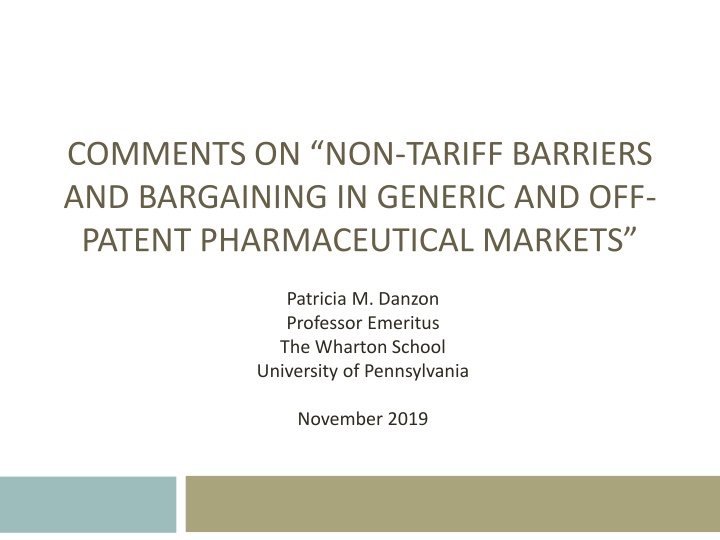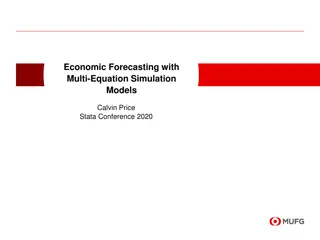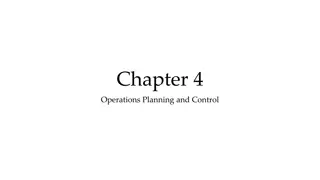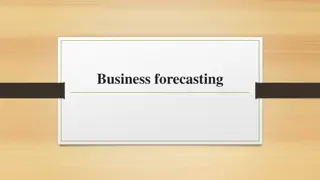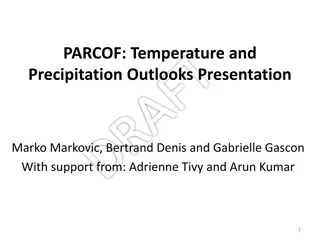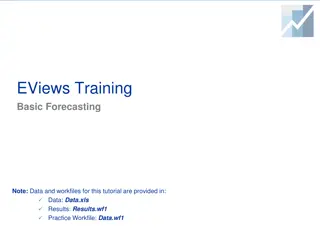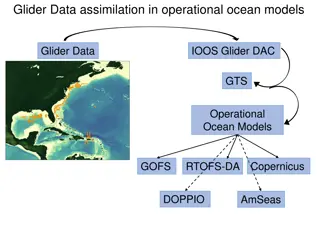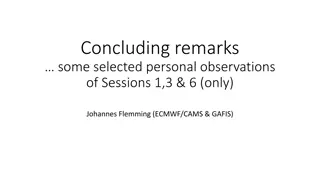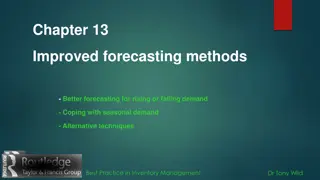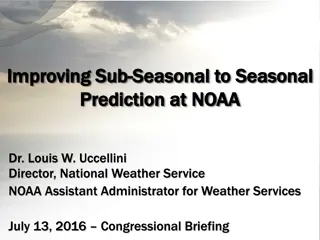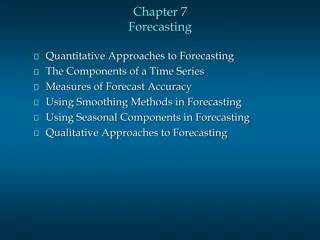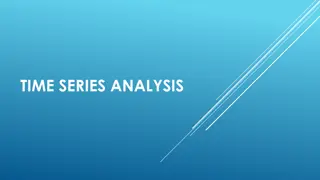Forecasting Seasonal Data Analysis
This lecture covers seasonal analysis, uses for seasonal models, seasonal and moving average forecasts, econometric models for forecasting seasonal patterns, steps for estimating a seasonal index, and types of seasonal indices like price index and fractional contribution index.
Download Presentation

Please find below an Image/Link to download the presentation.
The content on the website is provided AS IS for your information and personal use only. It may not be sold, licensed, or shared on other websites without obtaining consent from the author.If you encounter any issues during the download, it is possible that the publisher has removed the file from their server.
You are allowed to download the files provided on this website for personal or commercial use, subject to the condition that they are used lawfully. All files are the property of their respective owners.
The content on the website is provided AS IS for your information and personal use only. It may not be sold, licensed, or shared on other websites without obtaining consent from the author.
E N D
Presentation Transcript
COMMENTS ON NON-TARIFF BARRIERS AND BARGAINING IN GENERIC AND OFF- PATENT PHARMACEUTICAL MARKETS Patricia M. Danzon Professor Emeritus The Wharton School University of Pennsylvania November 2019
Overview of the Paper Estimate price ratios for generic + off-patent brand drugs for US vs. Australia, ON, BC, NZ, UK Conclusion: US prices are significantly higher if < 6 suppliers These empirical estimates used to estimate parameters of a structural model of bargaining between US payer and generic supplier Structural model used to estimate effects of 2 policy changes in US: Reciprocity of approvals (removing non-tariff barriers) Federal bargaining of prices Conclusion: Federal bargaining is more effective at reducing prices Removing non-tariff barriers adds little
Overview of Comments US Price measure is reimbursement price paid to pharmacies by Medicaid Overstates average price received by generic suppliers Sample of drugs is unrepresentative Markets with few suppliers may face higher (unobserved) costs # Suppliers is not exogenous Structural bargaining model omits important portfolio effects Lessons for US from foreign markets are limited for generics Policy implications
1. How Generic Prices are Determined in the US Pharmacists can substitute FDA AB-rated generics AB-rated generics: same active; same formulation; bioequivalent => Pharmacies are the decision-makers/customers for generic suppliers Private payers (PBMs, PDPs etc.) reimburse pharmacies for generics dispensed based on a MAC (max. allowable cost): same MAC for all AB- equivalent products MAC is based on low generic price from prior acquisition price audits Generic suppliers compete by price bids to pharmacies below MAC MAC pharmacy acquisition price = Confidential rebate to pharmacy Payers periodically audit pharmacy acquisition prices => cut MACs i.e. recoup savings from price competition with a lag Private payer price to pharmacy = generic supplier price + rebate from supplier to pharmacy
2. Medicaid Reimbursement Overstates Average Private Payer Prices for Generics Under Affordable Care Act, Federal Medicaid sets the Federal Upper Limit (FUL) at 175% of Average Weighted AMP AMP is Average Manufacturer Price, net of rebates, to retail pharmacies i.e. AMP approximates net price received by generic suppliers Excludes prices to mail order pharmacies, which may be relatively low States may choose to use a lower MAC rather than FUL, but not the norm State pharmacy associations argue to keep Medicaid prices at FUL because MCD dispensing fees are low Keep independent pharmacies in business many MCD recipients reportedly rely on independent pharmacies => MCD reimbursement (~10% of sales), based on FUL, exceeds prices paid by private payers and exceeds AMP, which approximates net price to generic firms
3. Sample Includes Only the Oldest Generics Only generic markets > 20 years from FDA approval of originator...but Generic entry in US usually occurs 10-15 years after FDA approval Follow-on patents often successfully challenged 5 yr. data exclusivity + 2.5 yrs. Stay = 7.5 yrs. is minimum Number of generic suppliers typically follows inverted U over time # Suppliers is not exogenous to price, as assumed Older drugs with few suppliers in GM sample likely in small classes and/or declining classes with exit due to obsolescence Classes with few suppliers may be relatively unprofitable, due to Relatively low volume Relatively high fixed costs due to age/capacity retrofit requirements Understanding reason for few suppliers is critical to sound policy response
4. How Bargaining Works in US: Pharmacy Customers Already Have Significant Power Customers of generic suppliers are pharmacies who can substitute, not payers US is dominated by large pharmacy chains, Walmarts, PBM-mail-order pharmacies + large wholesalers (for independent pharmacies) These chains bargain centrally, over huge drug portfolios and high volumes => prefer one or two large, reliable suppliers Generic co s bargaining power reflects portfolio breadth + early access to new generics (180 day exclusivities => large margins) + services (e.g. restocking) + reliability New entrants to smaller/older products are unlikely to disrupt incumbent suppliers GM bargaining model ignores these portfolio/size effects
5. Few Payers Ex-US Use Bargaining Canada CN provinces do not bargain; they fix generic reimbursement at X % of the originator price, where X declines as more generics enter Generic firms give hidden rebates to pharmacies to gain share, as in US CN payers do not capture these savings from price competition By contrast, US payers capture savings from price competition, with a lag, by using MAC based on lagged market prices UK NHS sets generics drugs tariff based on observed market prices (like MAC) 2017 Act gives NHS statutory power to collect price information And to control unreasonable price increases NZ NZ uses competitive tenders for drugs in some therapeutic classes Drugs that fail to win the tender are excluded from coverage
6. Policy Options for US 1.Federal bargaining Bargaining leverage requires walking away from a high price supplier But US consumers/payers count on reliable availability of generics Tendering => fewer suppliers likely to remain => higher risk of supply interruptions/shortages + prices increases in long run NZ is a much smaller market, not a relevant model for US 2. Reciprocal approvals (Reduction in Non-tariff barriers) Increases potential for quicker entry if US prices are uncompetitive but Portfolio barriers to uptake remain, likely to deter new entrants 3. Federal limits on unreasonable price increases Could address unjustified price hikes e.g. post-takeover 4. Anti-trust Anti-trust enforcement is critical, to deter price/market sharing agreements among generic suppliers + pay for delay 3. + 4. can target the few failures in mostly well-functioning generic markets
180-day Exclusivity for First Generic 180 day exclusivity for first generic to file a substantially complete ANDA and successfully challenge or not infringe any blocking patents (Para. IV) Strong incentive to challenge originator patents + aim to launch at data exclusivity expiry Mostly successful against follow-on, not composition-of - matter patents Originator may sell or license an authorized generic during the 180 days Approved under its NDA, not an ANDA Limited competition makes 180 days lucrative Large generic firms compete for exclusivity rights => encourages early generic entry
